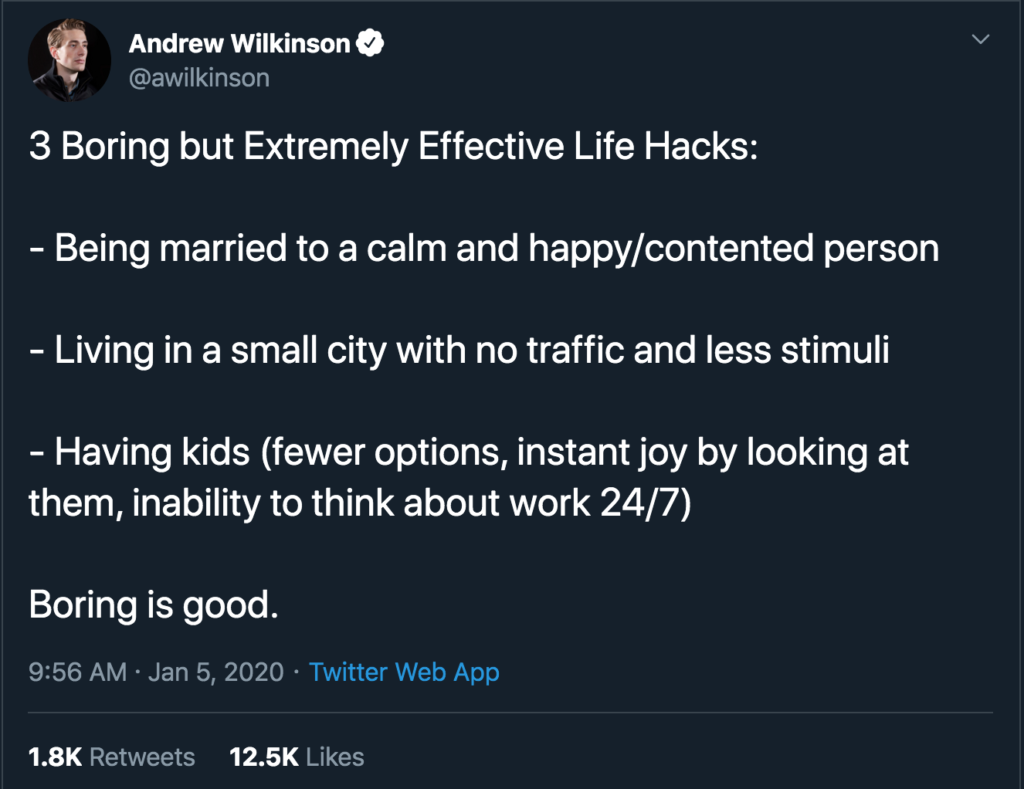Welcome, everyone, to our annual Holiday party. I’m so happy to see so many faces, people who’ve joined us this last year and people who’ve been part of the team for a few years now.
We’ve grown in so many ways as a company, and I want to take this time to thank all of you for your hard work.
I also want to tell you a story.
Lately I’ve been binge watching Chef’s Table on Netflix. I get inspired by people talking about their passion, so even though I’m not much of a cook, I love hearing others talk about cooking.
I watched it for a while and started noticing that there were episodes that left me inspired and ones that didn’t. And after some reflection, I realized the ones that didn’t inspire me were the ones with a glitzy success story focused on one lone genius figuring it all out on his own.
The chefs that inspired me were the ones who faced adversity. They experienced grief. They took time to figure things out. Their episodes showed their family, and friends, and coworkers —of people spending time, together.
Because it does take a village to build something great—a great restaurant, a great company. It takes a community. And the stories we tell about how we got here and what’s coming next matter. A lot.
When we started this journey five years ago, we had a simple story. We wanted to use technology to change debt collection.
Over the years, we grew. We added more people. We added more voices. Our story changed with the people who joined, because each person has added his or her own perspective.
With time, we realized that we have a bigger role to play than we first thought. We are not just about a great customer experience. We do much more than that.
We meet people at some of the worst times of their lives and we offer them a different story about debt, one that doesn’t rely on shame and guilt to collect.
We lead with empathy. We listen. We respect who they are, and where they come from. This is as important, if not more, as giving them the payment plan they were looking for.
What you do here, at our company, makes a difference to those people. We are entering 2019 with almost [redacted] consumers in our system. We [redacted] in a single year.
Everyone’s noticing. We even inspire traditional collectors to do things differently, from using our language to using new technologies.
Most of all, our customers are noticing—like [redacted], who wrote to us, saying “Your emails and messages were kind, understanding and indicative of the truth—which is that I’m a good person who fell on hard times, and was too scared, afraid and stuck to know what to do… You never gave up on me, and so when I could, I did everything I could to create a way to work with you to pay back my debt.”
We are writing this story together as we go, rewriting pain into hope and despair into inspiration.
Which leads me to you. To all of us.
I started having dinners this year because I was trying to figure out what makes a company great to work at after the first hundred people have joined—what attracts the type of people that makes work enjoyable.
This question led me back to empathy and our ability to listen to one another. To weave our stories together as we build something great.
All of us: those who had to grow up fast and those who took time to figure things out. Those who had sheltered lives and those who had to literally fight for their lives.
Those that faced rejection. Those that struggled to be accepted. Those who overcame adversity. Those who have failed, and yet still get up. And those who won. All of us.
Look around you. This is your team. This is your company. This is your story. What you choose to add to it may forever alter its nature.
The recent graduates thinking about their career paths. The seasoned veterans who joined to make us even greater. Everyone in between. It does take a village to build what we’ve built.
Now, I don’t know what the future holds. I think 2019 is going to be a great year. I think we’re going to continue to face adversity and win, again. I think we are going to expand our reach like never before.
No matter what we do, it’s going to be a great story. I can’t wait to hear your part of it as the year unfolds.
To where we’ve been, and where we’re going—together! Cheers to 2019.
